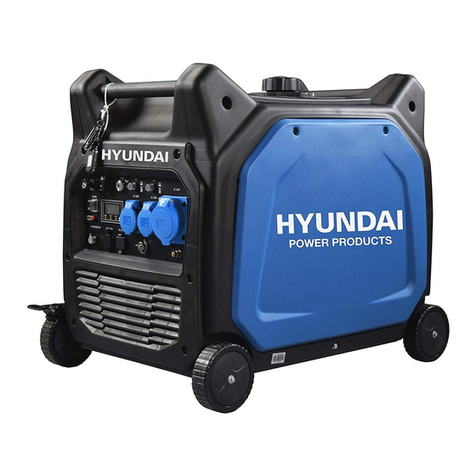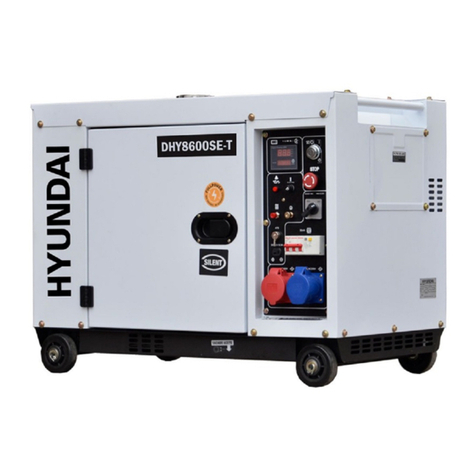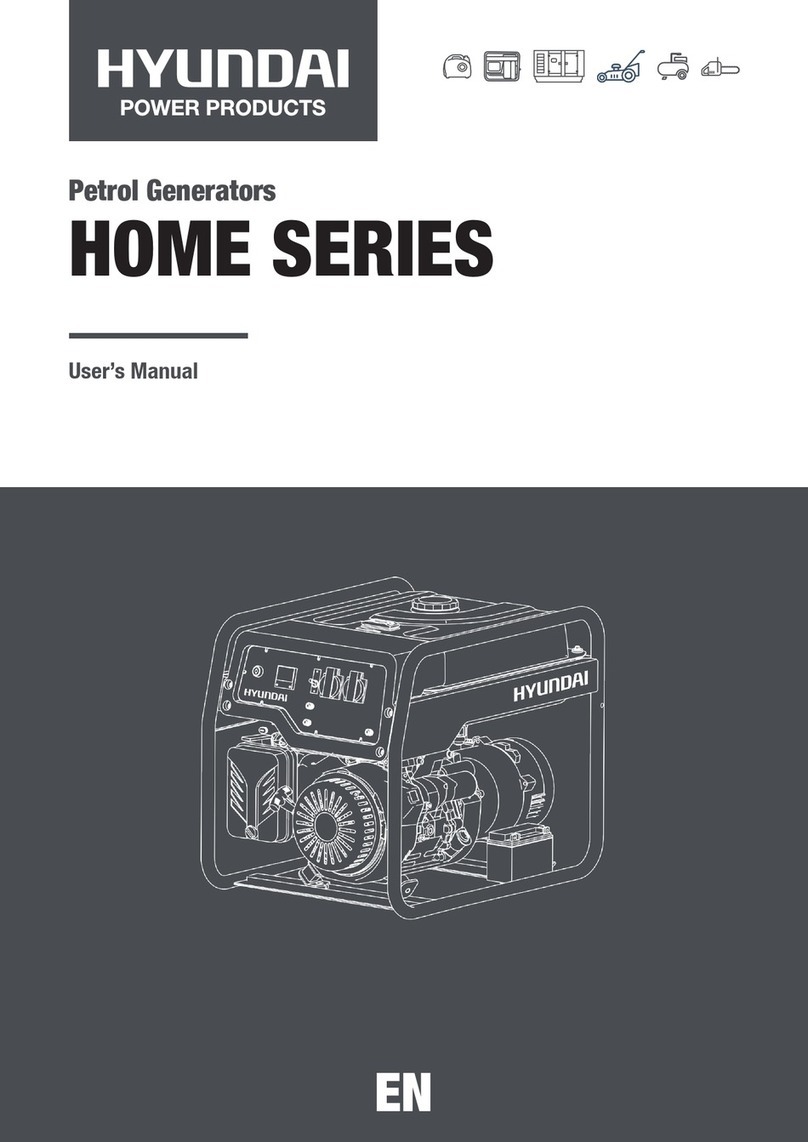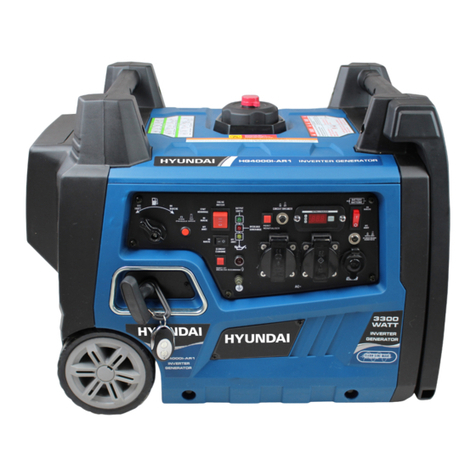
3
1. SAFETY INSTRUCTION
Warning:
1. Attention! Exhaust gases are toxic. Do not operate the generator in a room
without ventilation system!
2. Children should be protected by keeping them at a safe distance from the
generator set!
3. Refilling of the generating sets are not allowed during the operation!
4. If the generator will be mounted in a closed room, relevant safety regulations
against fire and explosion should be followed!
5. Do not connect to household circuit!
6. Do not use in wet condition!
7. Keep in flammable away!
8. When refuelling:
a) stop engine;
b) no smoking;
c) do not spill.
General security instructions
The operator must know the principles of functioning and the structure of the generator
and the motor. He must know how to stop the motor in case of urgency and how to
manipulate the controls.
Never let children use this device.
Never let people who do not know these instructions use this device. Local regulations
may impose restrictions on the age of the user.
Please do not use this device when people, especially children, or pets are nearby.
Direct them away from the working area.
The operator or the user are responsible for possible accidents or damage to other
persons or to their property.
Do not wear loose clothing or jewellery as this can get caught in the machinery as it runs.
Use safety equipment. Wear protective gear such as an anti-dust mask, non-slip safety
shoes, a helmet or hearing protection.
Stay vigilant, watch what you are doing and show good sense when you use the
generator. Do not use if you are tired or under the influence of drugs, alcohol or
medicines.
Install the generator in a place that is well ventilated and make sure that there is at least
1.5 metres between the generator and the walls of the building or other equipment. Do
not place flammable liquids or gases near the generator.
Do not run the generator in an enclosed or badly-ventilated space. The exhaust gas
from the motor contains carbon monoxide which is toxic and may lead to a loss of
consciousness or death.





































